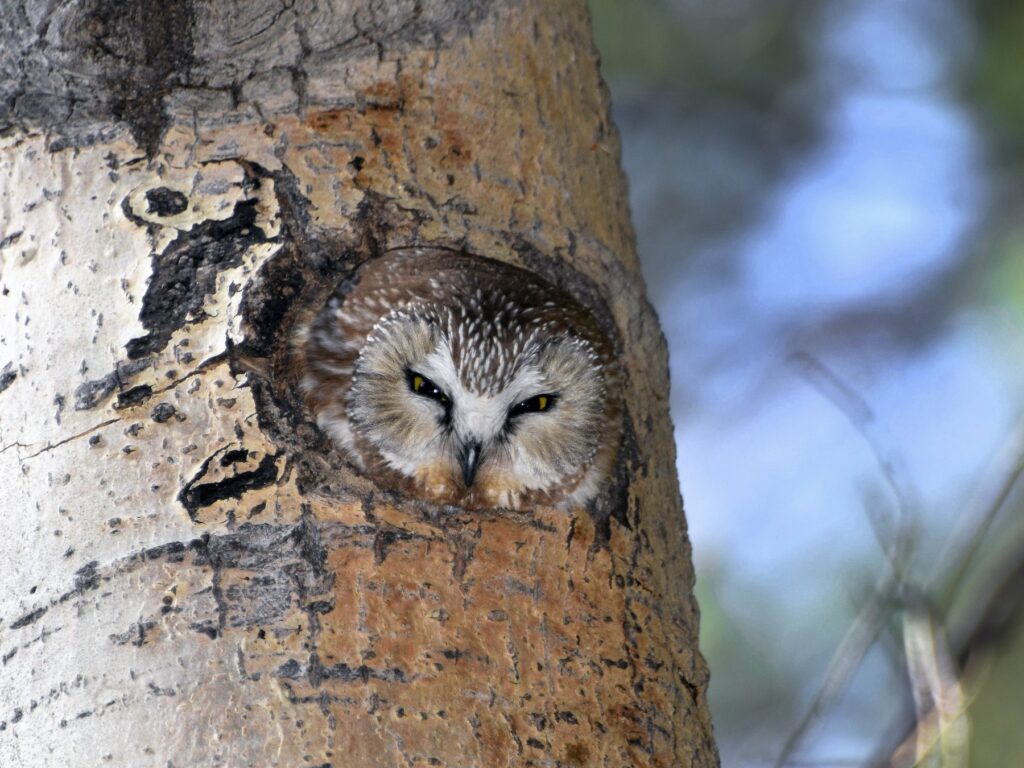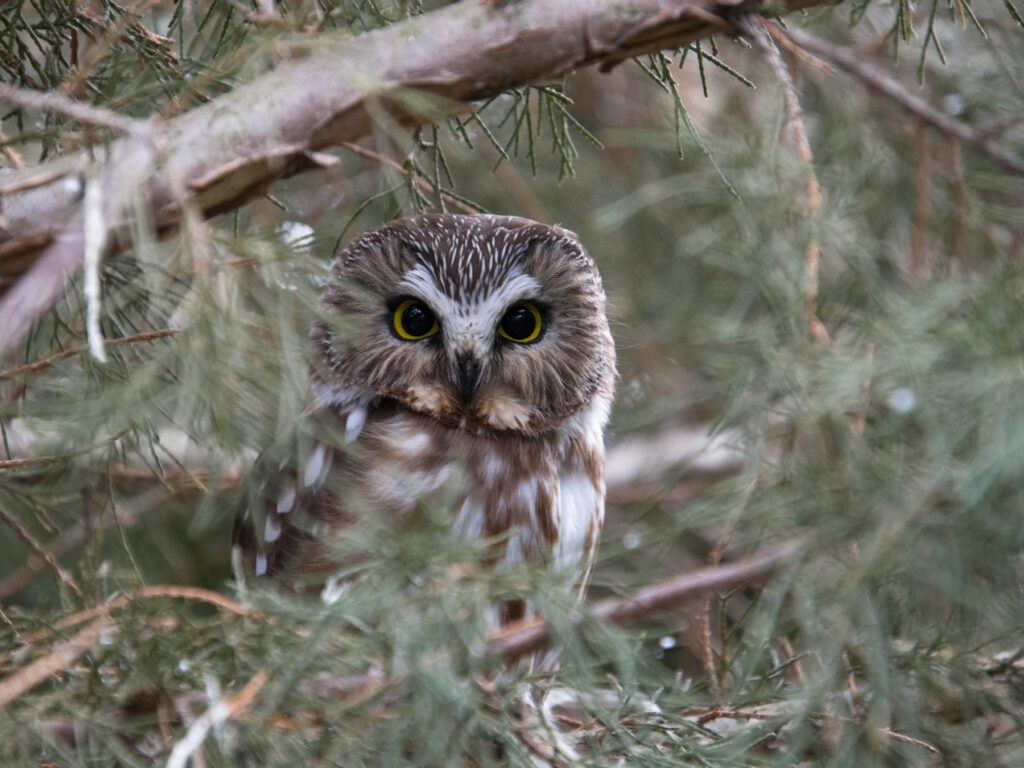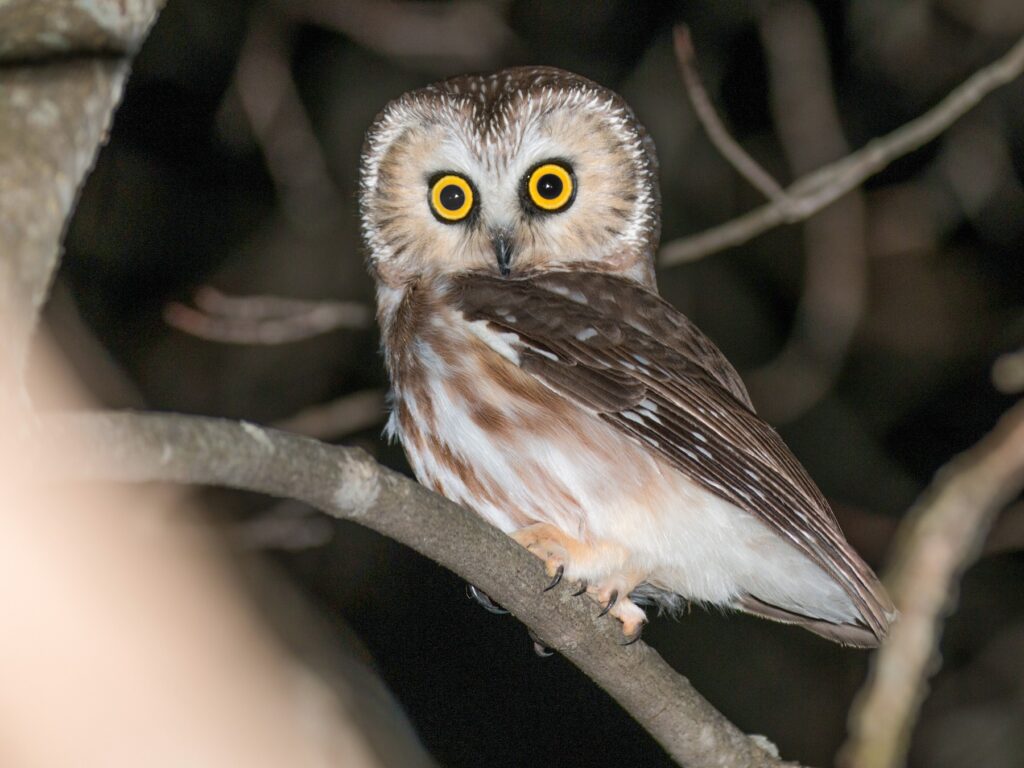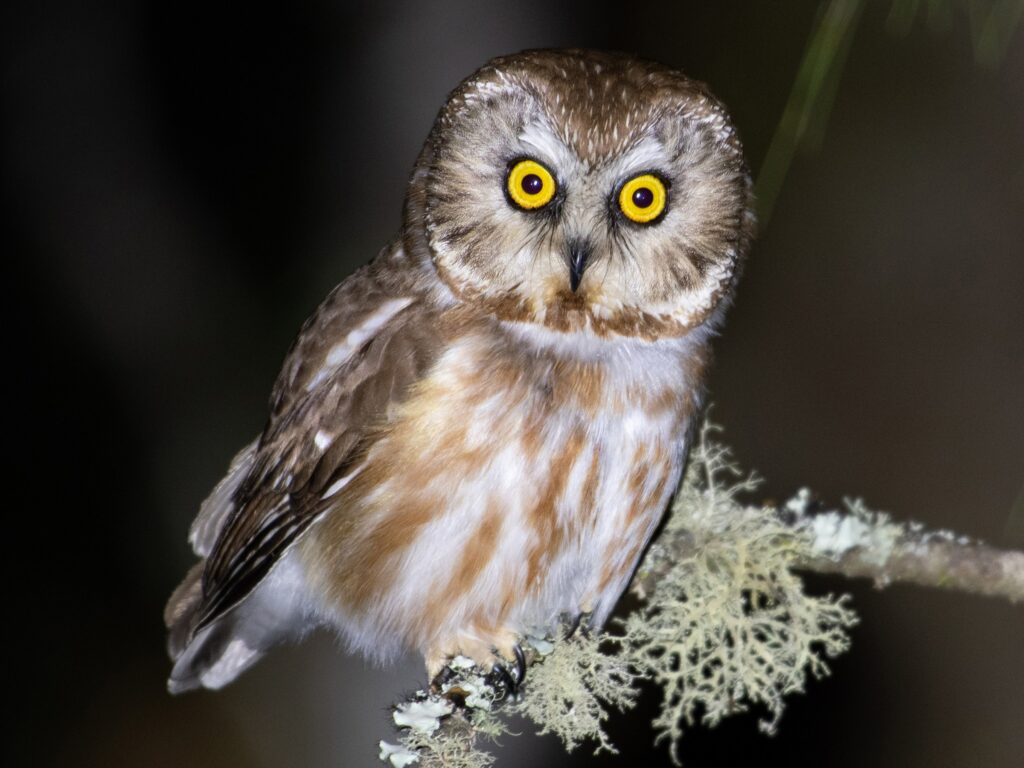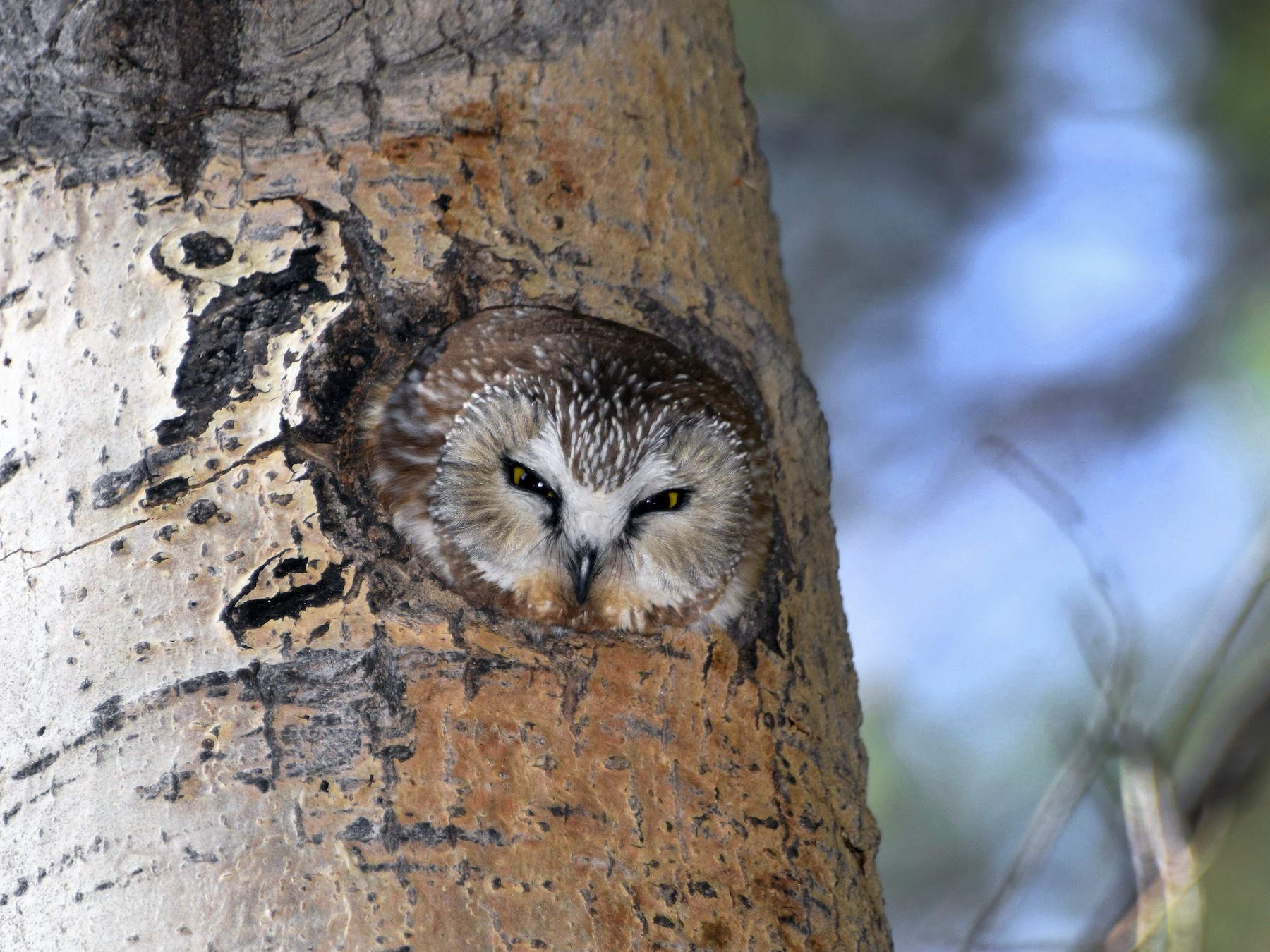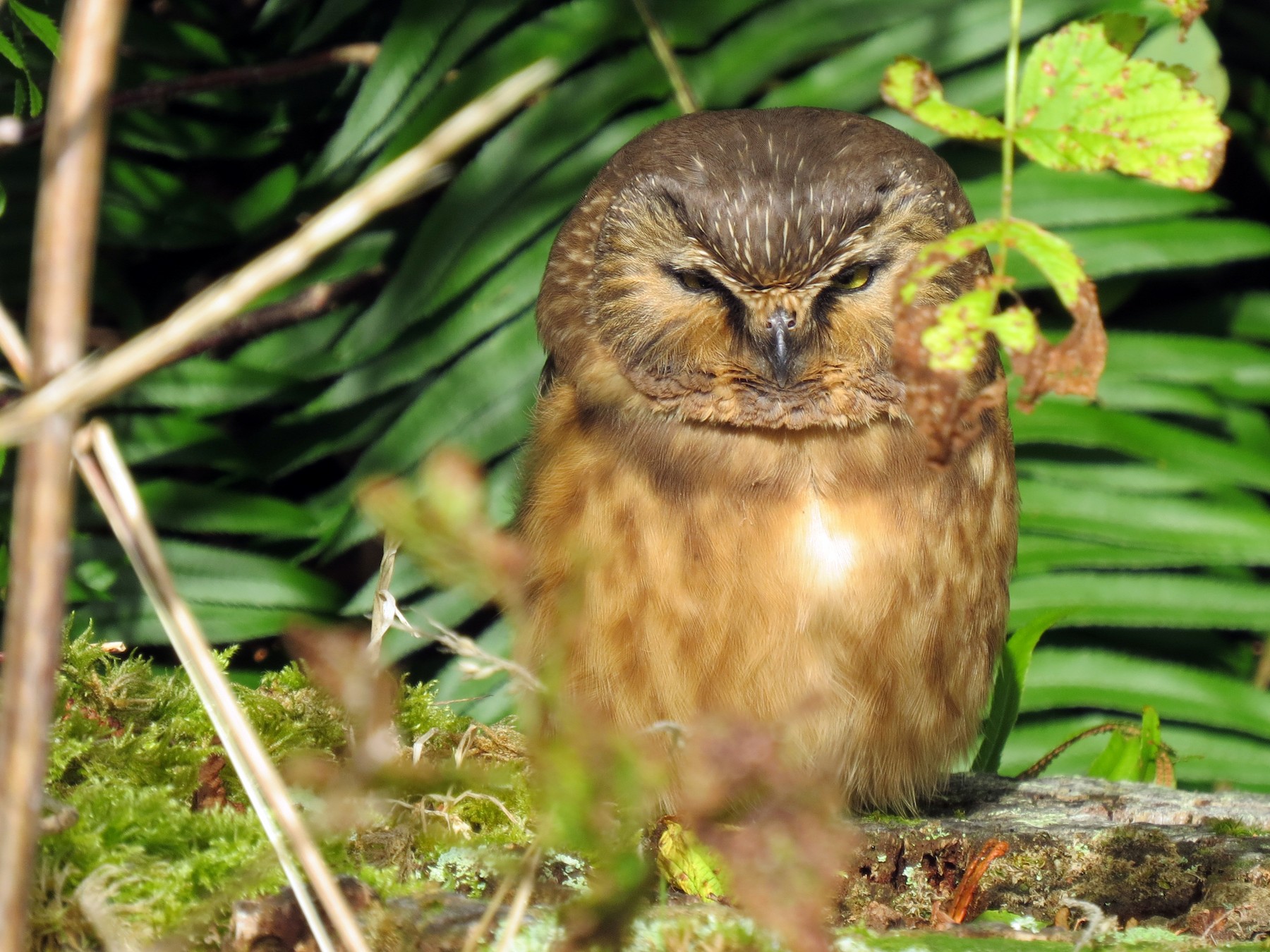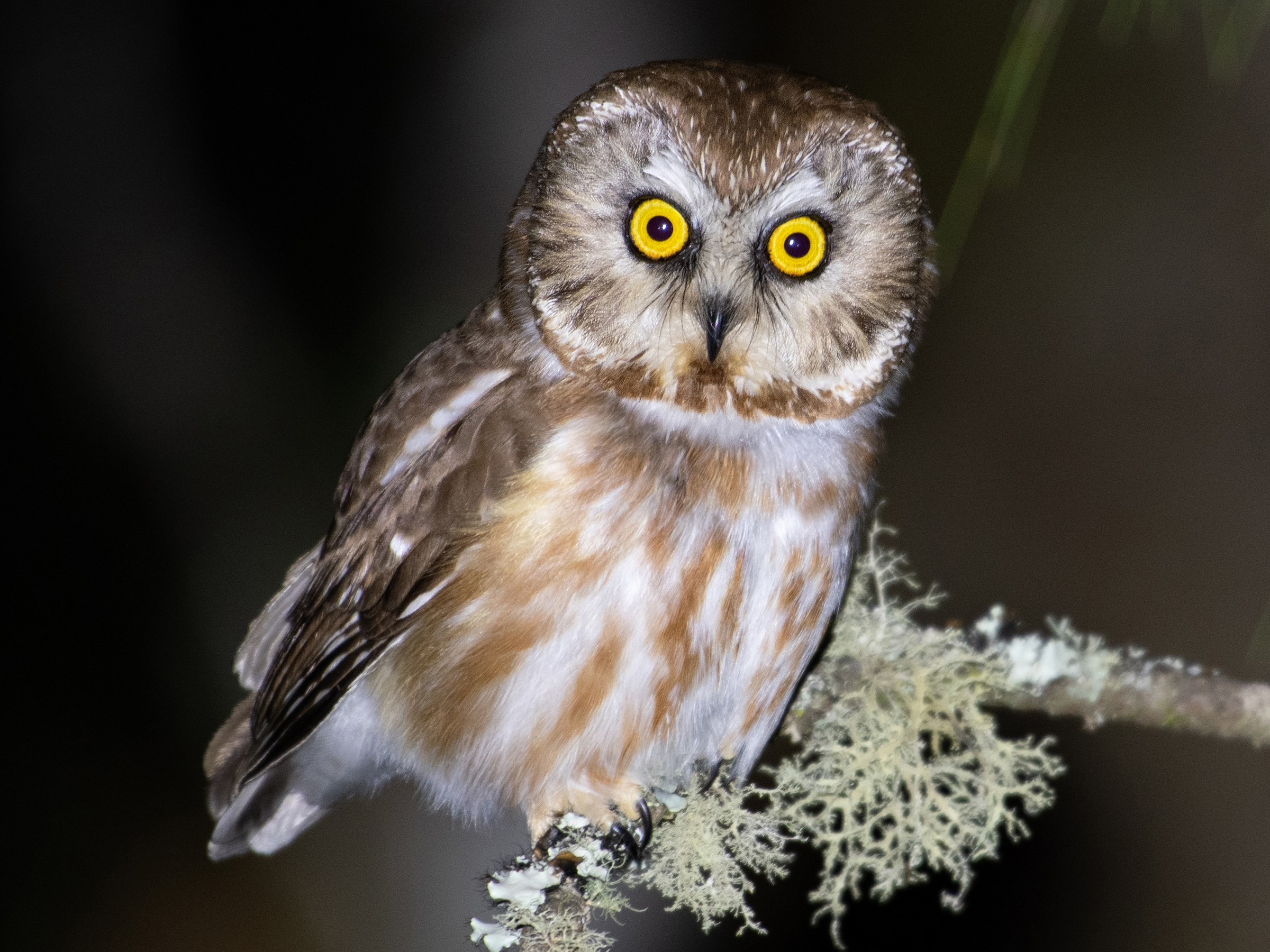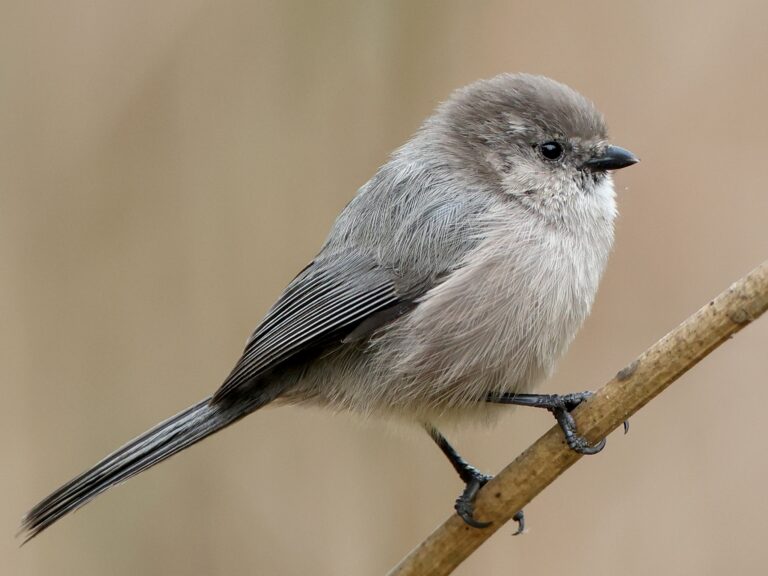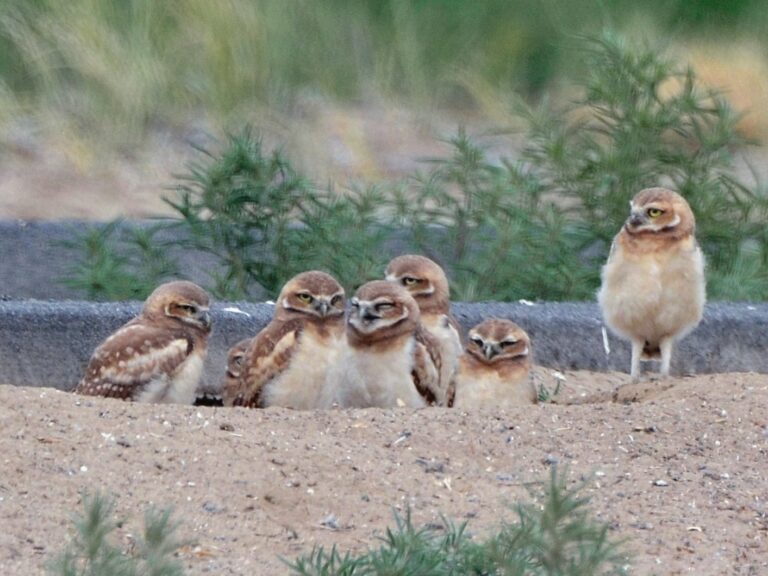Saw-Whet Owl: Discover this Elusive Nighttime Hunter
The Saw-Whet Owl is one of the smallest owls in North America. Its size and color patterns really stand out if you know what to look for.
Physical Characteristics
The Northern Saw-Whet Owl is tiny. Most adults weigh just 65 to 110 grams, or about 2.3 to 3.9 ounces. Their length falls between 17 and 21 centimeters—so, roughly 7 to 8 inches. Body feathers are brown with white spots, and the chest is streaked with white.
They’ve got a big, rounded head and no ear tufts at all. Their eyes are bright yellow, and the beak is small and black. Short tails and rounded wings help them zip through forests. You’ll almost never see them in daylight.
Their plumage blends right into tree bark, so good luck spotting one even in full sun.
Taxonomy and Scientific Classification
The Saw-Whet Owl’s scientific name is Aegolius acadicus. It belongs to the order Strigiformes, which covers all owls.
It’s part of the family Strigidae—these are the true owls.
| Rank | Name |
|---|---|
| Order | Strigiformes |
| Family | Strigidae |
| Genus | Aegolius |
| Species | A. acadicus |
Most people call it the Northern Saw-Whet Owl. Despite being so small, it’s spread out across North America.
Distinctive Features
A few things set the Saw-Whet Owl apart. Its name comes from its call, which really does sound like someone sharpening a saw. It keeps to itself at night and avoids territories where bigger owls rule. Its cryptic plumage, round head, and those yellow eyes make it pretty unmistakable if you get a good look.
You might hear a Saw-Whet up to 400 meters away in mixed forests, or even 700 meters in open fields. These traits make it a favorite among birders and researchers.
Habitat and Range
The Saw-whet Owl sticks to North America, mostly haunting forests and wooded spots. They’re flexible—adapting to different forest types and moving around when food gets scarce or seasons change.
Geographic Distribution
You’ll find Saw-whet Owls all over North America. Their range stretches from southern Canada through much of the U.S., as far north as central Alaska and down to central Mexico.
They live from the Atlantic coast to the Great Lakes in the east. Sometimes, they even show up in Florida during winter. Out west, they inhabit the Rockies, Sierra Nevada, and the Pacific Coast. They like places where winters aren’t brutal, but they’ll tough it out in colder spots too.
Their distribution usually matches up with dense forests and mixed woodlands. If you want more detail, check out this study on habitat use by Saw-whet Owls in the Sierra Nevada.
Preferred Environments
Saw-whet Owls pick spots with thick cover and plenty of hunting opportunities. They go for coniferous forests—think pine or spruce—and mixed woods with lots of trees and shrubs.
These places give them shelter from predators and weather, plus safe roosts for daytime naps. They nest in old woodpecker holes, natural tree cavities, or thick foliage. Sometimes, you might spot them in parks or even backyards, especially during migration. Open spaces? Not their thing.
They avoid busy urban areas, sticking to mature, thickly wooded spots for both nesting and roosting. Habitat loss and fragmentation can really mess with their range and success—see more in this article on how habitat loss limits saw-whet owl success.
Migration Patterns
Saw-whet Owls migrate, but not all of them do. Many move south in fall when prey gets scarce and the cold sets in. Migration starts in late September and peaks in October and November. These little owls travel at night, sometimes covering hundreds of miles.
Young birds are more likely to go the distance, while adults might stick closer to home if food’s around. During migration, they can pop up in places where you’d never see them otherwise—even southern states or backyard feeders.
Wintering birds use all sorts of forests, just looking for good cover and hunting grounds. Their flexible migration style helps them deal with changing climate and shifting habitats. For more about their movements, check out this overview on winter habitat.
Diet and Hunting Behavior
The Saw-whet Owl mostly eats small mammals. It’s well-adapted for finding food in the dark. Its hunting style and diet help it make a living in woodland habitats all over North America.
Primary Diet
Small mammals are the main course for Saw-whet Owls. Mice are a big part of their menu, but they’ll also go after voles and shrews. If they’re lucky, they’ll snag small birds, moles, or even squirrels. Insects matter, too—especially in warmer months.
Beetles, moths, and other big bugs sometimes end up as snacks. With bigger prey, Saw-whets tear it up instead of swallowing it whole, which makes sense if you think about their size. This is covered in research on their feeding behavior.
Hunting Strategies
Saw-whet Owls hunt at night. Their sharp hearing helps them find prey in total darkness. The facial discs funnel sound right to their ears, which gives them a real edge. Usually, they perch low and wait quietly before swooping down on something tasty.
They rely more on sound than sight, especially when grass or snow covers the ground. To avoid trouble, they steer clear of areas with bigger owls—no reason to pick a fight. This unique hunting style lets them catch quick, small animals in thick woods. There’s more on this in a behavioral study.
Life Cycle and Reproduction
Saw-whet Owls go through a yearly cycle of nesting and raising young. Their small size and specific courtship habits shape how they breed and care for chicks.
Nesting Habits
These owls use tree cavities for nests, usually old woodpecker holes or natural hollows. They don’t bother building their own nests—just line the cavity with leftover wood chips or whatever soft stuff’s there.
Most nesting sites are deep in mixed or conifer forests, away from heavy disturbance. The female lays between 4 and 7 eggs. She incubates them for about 26 to 29 days, rarely leaving the nest at all. The male brings her food and, once the chicks hatch, feeds them too.
When nestlings hatch, they’re covered in soft, white down. Both parents feed the chicks, dropping off small pieces of prey. Fledging happens after about 4 to 5 weeks. The young owls start hopping around nearby branches before flying off on their own. For more on these behaviors, check out this overview of breeding biology.
Courtship and Mating
Males sing at night during breeding season, repeating a series of whistles to attract females. These calls can carry pretty far, letting females know a male’s around and ready.
Pair bonds usually form in early spring. Most pairs stay monogamous for the season, but if food’s plentiful, polygamy happens. Males bring food to females as part of their courtship—sort of a dinner date, but with more feathers. This feeding helps the female get ready for egg laying.
Once they pair up, they pick a nesting cavity together. The female settles in, and the male’s main job is to hunt and deliver meals. If you want a deeper dive, see studies on reproductive success and behavior.
Interactions and Conservation
The Northern Saw-whet Owl is a quiet little forest dweller with some quirky habits. Its population health, run-ins with other species, and natural threats all affect its survival.
Population and Trends
Saw-whet Owl numbers are generally steady in North America, but some regions have concerns. In places like the Sierra Nevada, tree type and elevation shape where these owls show up—they like dense, mature forests.
Population numbers shift year by year, probably because of food supply, weather, and habitat changes. Conservationists track populations to see how climate, land use, or forest management impact the species.
Efforts focus on keeping habitat patches healthy and protecting nesting spots from logging or development. For more on what influences their presence, see this research on Saw-whet Owl occupancy and habitat use.
Predators and Threats
Bigger raptors, like the Great Horned Owl, pose a real threat to Saw-whets. When large owls move in, Saw-whets often steer clear or risk becoming dinner. Other dangers include habitat loss from logging or fires. Bad weather, cars, and even house cats add to the risks.
Conservation efforts try to cut down on these threats by encouraging smart forest management and spreading awareness. Research in southern Idaho highlights how important it is to keep things quiet—these owls depend on super-sensitive hearing for both hunting and dodging predators.
Relationships with Other Birds
Saw-whet Owls share their habitats with plenty of other small birds. They often compete with species like the Boreal Owl for nest sites and food.
These rivalries shape where each species shows up in the forest. Some birds take lower tree cavities, others pick higher spots, and many just hunt at different times to avoid direct conflict.
Chickadees and other small songbirds sometimes mob Saw-whet Owls during the day. This mobbing usually makes the owls move or hide, but it rarely harms them. It’s a lively scene—competition and avoidance are everywhere among forest birds. These tangled relationships play a big part in how bird communities form and change.
Frequently Asked Questions
Saw-whet owls have unique calls, age differences, and specific migration triggers. They live in certain habitats, have sharp senses, and laws protect them.
What distinct sounds does a saw-whet owl’s call include?
The saw-whet owl gives off a clear, whistled “toot-toot-toot” call. Sometimes these calls repeat for several minutes at a time These sounds help them mark territory and attract mates. Field researchers have spent a lot of time listening to and recording these calls—here’s a detailed study if you’re curious.
You can hear it for yourself here.
How can you differentiate between juvenile and adult saw-whet owls?
Juvenile saw-whet owls usually have dark brown bodies with buffy or orange bellies. Their faces look darker and less sharply marked than adults.
Adult saw-whet owls stand out with a more distinct white and brown pattern on their faces. Their undersides are lighter, making them a bit easier to spot if you know what you’re looking for.
What are the primary factors that affect the migration patterns of saw-whet owls?
Saw-whet owls migrate based on food supply, weather, and daylight. If small mammals are everywhere, fewer owls bother with long migrations.
When the weather turns harsh or days get shorter, many start moving to new areas. It’s a mix of instinct and necessity, really.
Which habitats are most commonly associated with saw-whet owls?
You’ll find saw-whet owls in dense, mixed forests with plenty of cover. They like woodlands near water, where hunting comes easier.
These habitats let them use their “perch and pounce” hunting style. There’s a good breakdown of this in HOW TO WATCH AN OWL.
What adaptations do saw-whet owls have for their auditory senses?
Saw-whet owls have excellent hearing, which lets them track prey in the dark. Their ear openings aren’t symmetrical, so they can pinpoint sounds with surprising accuracy.
Researchers have found they’re especially sensitive to certain frequencies. That’s a big reason they’re such effective night hunters—see the details here.
Is it legal to have a saw-whet owl as a domestic pet?
In most places, you can’t legally keep a saw-whet owl as a pet. Wildlife laws protect these little birds, and owning one without special permits just isn’t allowed. Usually, only licensed rehabilitators or educators get permission to have them in captivity.

